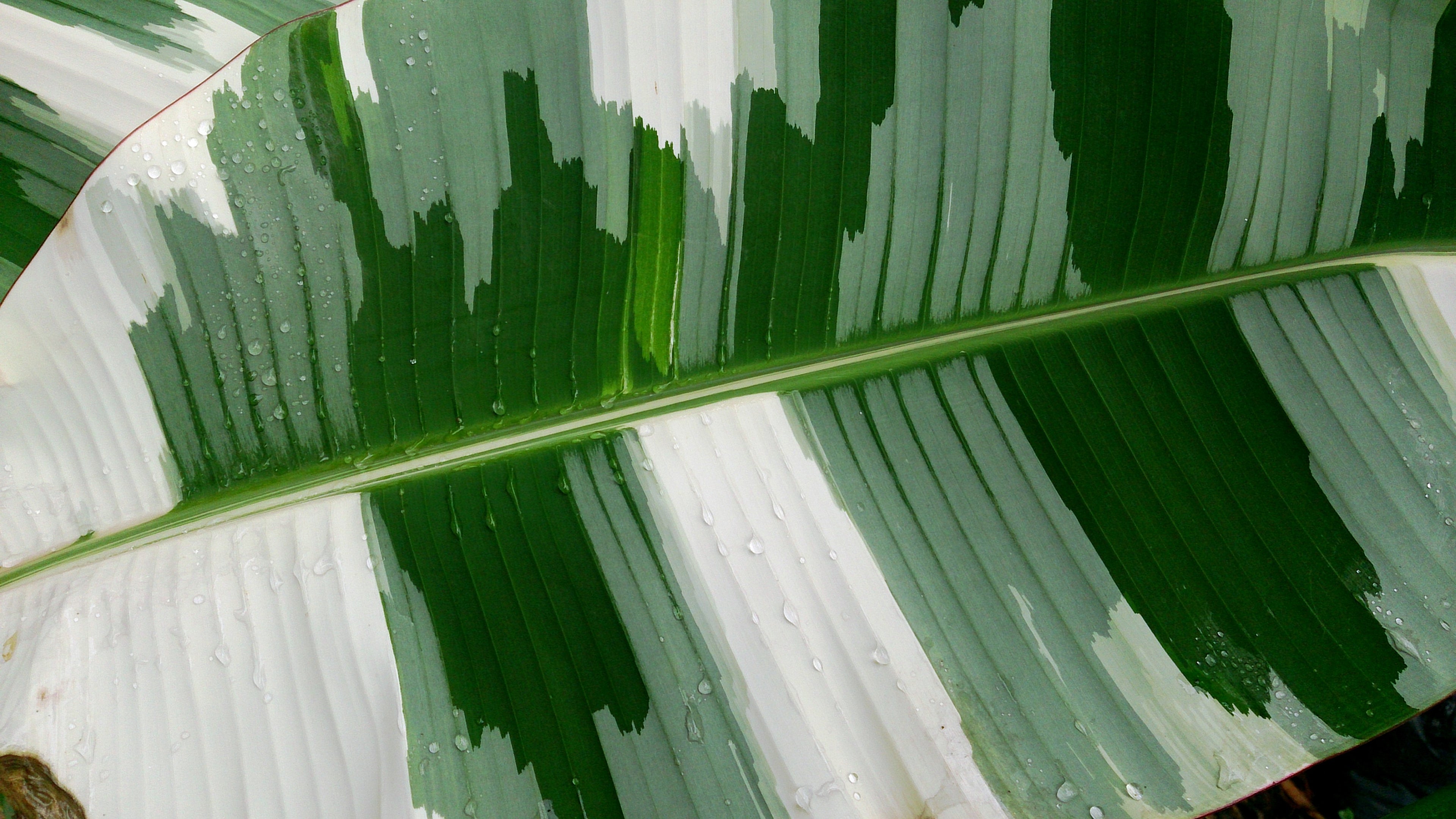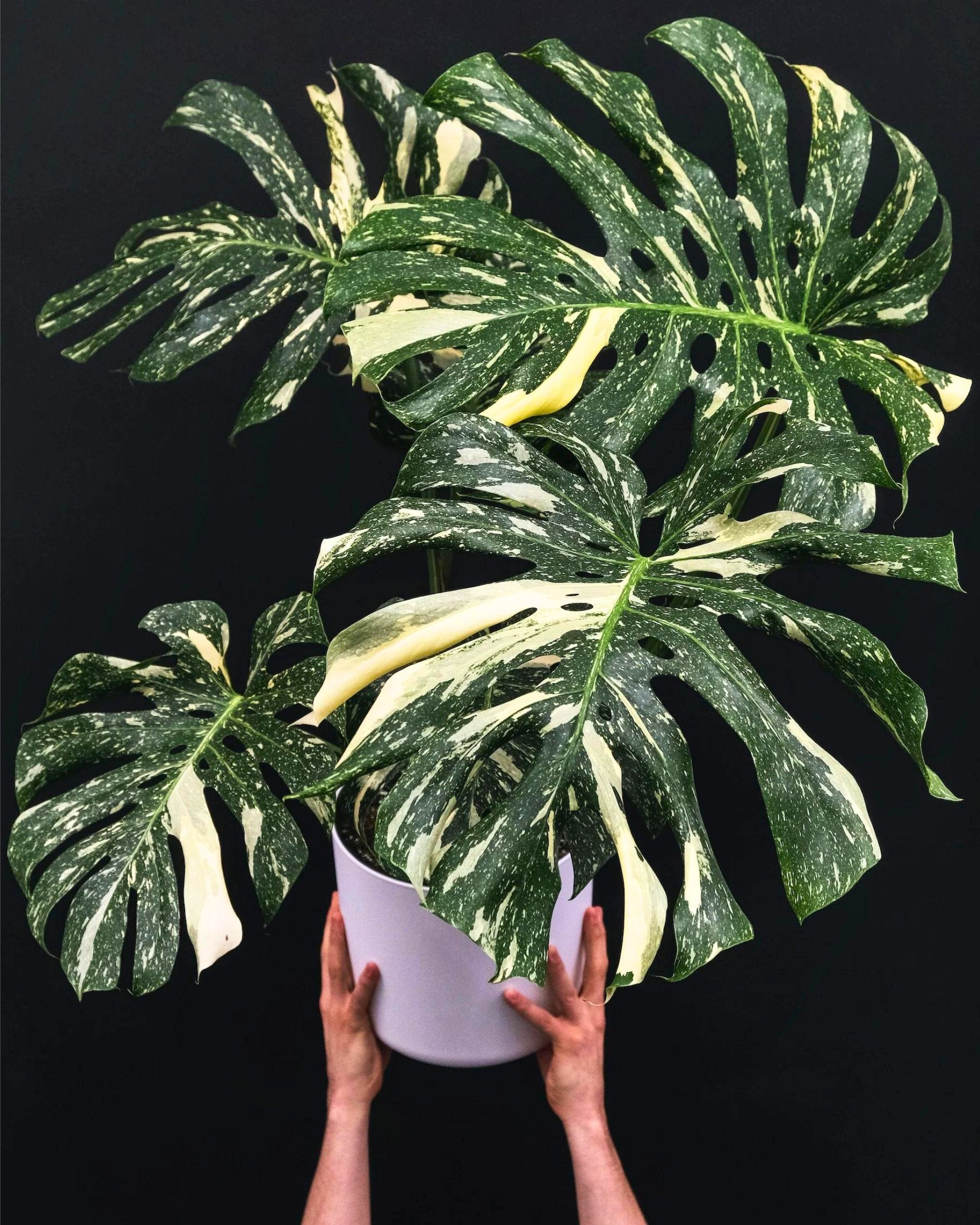Mastering the Art of Variegated Banana Plant Care: A Comprehensive Guide to Musa x Paradisiaca 'AeAe'
Musa x Paradisiaca 'Ae Ae', also known as the variegated banana plant, Royal Hawaiian, Sacred Banana, Koae (hair prematurely graying), Manini (dark & light stripped fish) is a tropical perennial plant that is indigenous to the Hawaiian islands. They get their name from their gorgeous white and green striped leaves. These plants can be grown indoors or outdoors and are prized for their magnificent leaves and variegation. They can reach a height of 15 feet when grown in ideal conditions, but when grown in pots, they typically become smaller.
It's crucial to give your Variegated Banana Musa AeAe the ideal conditions in terms of temperature, humidity, soil, fertilizer, and light. You'll also need to keep an eye out for pests and make sure it is well fed (fertilizer) and watered as they are heavy feeders. Keep reading below is a thorough maintenance and care guide to keep your variegated banana plant strong and thriving.
Banana Musa AeAe Light Requirements
Banana trees with variegation prefer partial shade to direct sunlight. To avoid scorching their leaves and turning the variegation brown, they should not be exposed to prolonged periods of intense sunlight.
When grown indoors, they should be placed in a sunny location that receives at least six hours of direct sunlight each day, such as a south or east-facing window. You can supplement with a grow light if it's not getting enough natural light. However, they must be kept out of the direct sun and placed in a semi-shaded area if grown outdoors.
Humidity:
The Variegated Banana Musa AeAe thrive in humid climates because they are tropical plants. To mimic their natural tropical environment, consider a humidifier close, pebble tray, or grouping your plants together to increase humidity.
Soil:
The Banana Musa Ae Ae prefers soil that is moist and well-draining, just like in their tropical environment. For these plants, a fertile, loamy soil mixture combined with some perlite and orchid bark works well.. Use a pot with multiple drainage holes if you're growing in a container to avoid root rot. Another tip is to tilt your planter so that the excess water escapes.
Fertilizer:
The Banana Musa AeAe is a fast-growing plant, which means it needs a lot of nutrients to grow strong and healthy foliage and roots. For this reason, it's crucial to fertilize them frequently unless you want stunted growth.
Use a balanced fertilizer (NPK) every two to four weeks. However, you can use a half dilution more frequently that contains equal amounts of nitrogen, phosphorus, and potassium more frequently if you prefer. We recommend slow-release fertilizer for best results.
Some of the fertilizers to use on a Variegated Banana Musa are liquid fertilizer or a slow-release fertilizer if you are growing your banana plant in a pot. We would suggest using granular fertilizer and mixing it into the soil if you are growing it in the ground.
Temperature:
The best option if you live in a cold climate is to grow your Variegated Banana Musa indoors or bring them inside during the winter months when it's colder.
If you reside in a warm region with mild winters, we only advise planting them in the ground so that they can grow big and lush.
The ideal temperatures for a Musa AeAe range from 67°F at night to 80°F during the day.
Musa AeAe Watering:
As we previously mentioned, Variegated Banana Musa plants are thirsty and need to be regularly watered to keep their soil moist but not soggy. They are vulnerable to root rot, so it's crucial to avoid overwatering them, by watering too frequently.
Unfortunately there is not a one size fits all for watering this beautiful variegated plant. The size of the plant, size of the pot, the kind of soil mixture, the ambient temperature, and relative humidity will all affect how frequently you should water your plants.
Generally speaking, you should water your Variegated Banana Musa AeAe once per week, letting the soil get a little bit dry in between. With your finger or a moisture meter, you can measure the moisture content of the soil to tell when to water based on your environment.
Just like watering less in the winter, you might need to water your plant more frequently in the summer, especially if it's in a pot.
Pests:
Variegated Banana Musa's are vulnerable to pests like aphids, mealybugs, and scale insects, just like any other kind of plant. The sweet nectar that the flowers and leaves produce unfortunately attracts these pests, which if left unchecked can spread and seriously harm your plant.
Try a natural remedy like Neem Oil or horticultural soap to get rid of these pests.
To avoid serious infestations, it's critical to monitor your plant and look for pest signs on a regular basis and hose your plant down with water to rinse off any dust or bugs.
Propagation:
Propagating your Banana Musa AeAe is super easy. At the base of the plant, variegated banana plants frequently produce offsets or "pups".
To accomplish this, carefully loosen the pup from the ground by digging around its base moving the dirt, and then carefully pull it away from the mother plant. Plant the pup in a well-draining soil mixture that could be enhanced with organic compost or worm castings, making sure to leave the roots unbroken.
Conclusion:
In conclusion, despite being very rare and requiring special care, Variegated Banana AeAe trees are well worth the effort. These exotic beauties will add a touch of paradise and variegation to your home like no other!






3 comments
I have an AE AE Banana plant in a small greenhouse. I use a grow light to give it more light during the short days of winter. It gets rain water without fertilizer in winter. It seems to be loosing variegation in its new leaves. Should I start fertilizing in winter or just wait till spring to see if the variegation improves?
How tall should the pups be before separating from the mother plant? Thx
Well written synopsis